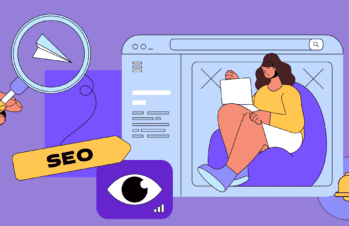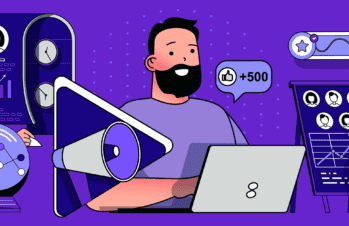Digital equity is the assurance that everyone not only has access to the information and technology they need to fully participate in society, but it also entails ensuring that everyone has access to sufficient connection speeds, and is equipped with the skills necessary to navigate the online world.
As the digital age continues to evolve, private companies, government officials, and nonprofit organizations have become increasingly concerned with the state of digital equity.
Now that we’re living in a world shaped by COVID-19, we’re seeing just how important digital equity is for almost every aspect of people’s lives.
It means the difference between being able to order groceries and avoid going into a store, and needing to shop among countless other people at least once a week.
It means the difference between being able to do a telehealth appointment for a sick child, and needing to go into a doctor’s office.
Why does this matter to brands? Well first of all, because as we’ve seen proven time and time again during the course of this pandemic, we’re all in this together.
The brands that are winning during this time are not the ones that are in it only for themselves. They’re the ones that are supporting their communities, finding new ways to help their customers, and innovating for the greater good.
Here’s what you need to know about digital equity and how it could be affecting your customers.
Digital Equity & COVID-19
As mentioned above, digital equity is more critical than ever right now.
Most schools around the country have embraced an e-learning model, and those programs are crucial in ensuring that students don’t fall too far behind during this unprecedented period of school closures.
Many colleges and universities are now offering online-only classes, and many companies have shifted to remote work.
Even with states slowly reopening non-essential businesses, social distancing is required, and the majority of people are continuing to limit their contact with and exposure to the outside world. So a huge number of people who previously weren’t dependent on access to information and technology, now are.
COVID-19 has impacted every industry across the board, and the long-term implications of such a profound shift in behavior, business models, and learning tactics are still unknown. However, one thing is clear: the proliferation of remote and virtual solutions has impacted everyone’s lives in one way or another, and this acceleration of the digital ecosystem has to be carefully considered and adapted to, rather than avoided.
Digital Equity & New Business Models
Consumer behavior is shifting, and people are increasingly expecting online solutions for things they never would have before. COVID-19 has accelerated the need for digital solutions and separated forward-thinking innovative companies from companies that prefer to play it safe.
Brick and mortar businesses that neglected to establish their online presence were hit hard by COVID-19, while businesses that were either already set up for online ordering or put it in place quickly, continued to draw in customers. It’s not only important for businesses to offer online solutions, but for people to be able to access those solutions, and establish their own online presence.
A new business model is emerging, and that model is driven by what customers want and need: safe, contactless solutions, such as online shopping, curbside pickup, and virtual events. Digital equity can ensure that every entrepreneur and every brand, whether seasoned or newly established, can fully participate in this new digital ecosystem.
Digital Equity & Remote Work
“Now this tech has a more urgent purpose than the luxury of convenience. It makes staying at home possible (and much more palatable) to people who can afford it. For the fortunate, work, shopping and even school can be rerouted through the Internet. But it also bakes in tech-industry assumptions about work happening behind a keyboard, not to mention access to resources” – The Washington Post
The workforce, from nurses to karate instructors to artists, are experiencing an unprecedented shift in their work lives. Many instructors have adapted by offering online classes, courses, and services, while others have set up eCommerce platforms so they can continue selling products online.
Many employees suddenly went from working in an office everyday, to working inside their own homes, and have had to navigate every aspect of that transition, from setting up a workspace to managing personal distractions and maximizing productivity. But what about employees that were ordered to work remotely, but didn’t have the right equipment?
Many companies delivered equipment to people’s homes so they’d be fully prepared to continue working, but for employees who didn’t have that option through their employer, they either had to hunker down and buy the necessary equipment, or possibly, look for employment elsewhere if they couldn’t afford the equipment.
While digital equity efforts mainly address equal access to technology in the classroom, from students to employees, access to technology outside of the classroom is now, in some cases, necessary for full participation in the workforce, and in classroom learning.
Efforts Toward Digital Equity
Educators have long been aware of the disparity between students who have access to technology and sufficient internet speeds and students who don’t. From training educators on how to properly incorporate technology, to ensuring that all schools and students have equal access to the technological devices needed for training, we’ve made great strides toward greater digital equity.
Proposals have been made for Digital Equity Networks that connect communities to County fiber-optic infrastructure, as one of the main reasons for digital inequality is a lack of infrastructure. Nonprofits such as the National Collaborative for Digital Equity are striving to raise funds for digital equity efforts.
How Tech Companies Can Drive Digital Equity
Major tech companies, such as Microsoft, describe their mission as “empowering every person and every organization on the planet to achieve more.” As part of this mission, Microsoft hosts Digital Inclusion Week, a week-long event that includes speakers and workshops to promote universal broadband access, as well as digital literacy.
Aside from hosting events like these, businesses across the board can promote digital equity by offering free classes in underprivileged neighborhoods, raising funds to install more fiber-optic lines, offer their technology at discounted rates to students and teachers, and raising awareness about digital equity in their campaign messages.







